Building of the Day: 1678 Park Place
Brooklyn, one building at a time. Name: Former Congregation Men of Justice (Anshe Zedek), now Bright Light Baptist Church Address: 1678 Park Place Cross Streets: Ralph and Howard Avenues Neighborhood: Brownsville Year Built: 1913 Architectural Style: Renaissance Revival with Moorish details Architect: Faber & Murick Other Buildings by Architect: None found Landmarked: No The story:…
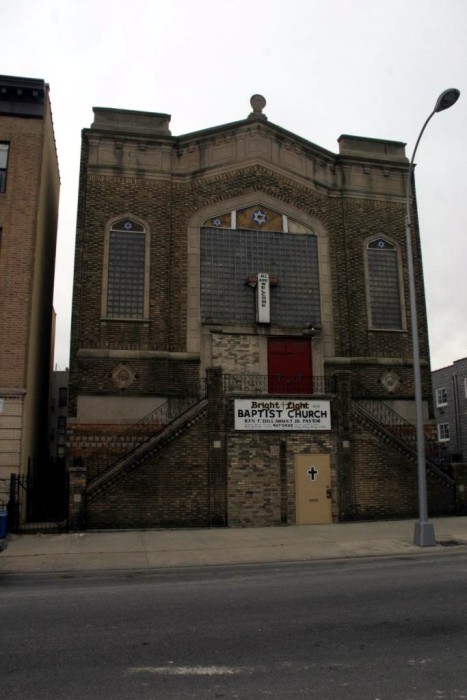

Brooklyn, one building at a time.
Name: Former Congregation Men of Justice (Anshe Zedek), now Bright Light Baptist Church
Address: 1678 Park Place
Cross Streets: Ralph and Howard Avenues
Neighborhood: Brownsville
Year Built: 1913
Architectural Style: Renaissance Revival with Moorish details
Architect: Faber & Murick
Other Buildings by Architect: None found
Landmarked: No
The story: The Congregation Men of Justice was organized in November of 1909 by ten Brownsville men, just enough to form a minyan, the minimum number of men necessary in Jewish tradition to conduct public worship. That number soon grew as the Jewish population of Brownsville soared in the early 20th century. By 1913, there were 300 people in the congregation, and the space they were renting on Ralph Avenue was not big enough. It was time for the congregation to build their own synagogue. The name of their congregation in Hebrew was Anshe Zedek.
This plot of land on the Crown Heights/Brownsville border was purchased, and the architectural firm of Faber & Murick was chosen to design the building. On August 17, 1913, a grand parade was held in the neighborhood, and the congregation marched from Ralph Avenue down to the new site, where the cornerstone of the synagogue was laid with great pomp and ceremony. The stone had the date and inscription in both English and Hebrew.
The building went up fast. Only a month later, the congregation marched once again from their old space at 528 Ralph Avenue to the new location, where the lower level had been finished enough for them to move in and conduct services. The Torah scrolls were installed, prayers and speeches were given, a banquet was held, and the building was in use while the main sanctuary and the rest of the building were being completed. After the entire building was finished, the basement space was used for a free Hebrew School.
I was not able to find out anything about Faber & Murick, the architects, but they designed a nice building. It was in the Renaissance Revival style, generally, with Moorish/Middle Eastern detailing. This was a quite common style for New York’s synagogues and temples, as American Jews sought to establish an architectural style.
Christians had a long history of church architectural styles to draw on, but most American Jews, whose ancestors had spread out across Europe, and spent centuries ducking persecution no matter where they settled, had always been low key and unobtrusive in their architecture. Now that they were free to build tall in America, architects were experimenting with style.
Many of the more established and wealthier synagogues were designed in a bold Neo-Classical style, temples in the Roman sense; others referenced their Middle Eastern roots with more Moorish/Middle Eastern details. The result is an interesting style all its own, and very recognizable, even as most of these buildings, especially in Brooklyn, are no longer synagogues or temples, but Christian churches.
The Moorish arched windows on either side of the central window are quite beautiful. Although I have no old photographs to reference, I would imagine that originally, all of the glass block windows once had stained glass of some sort. Perhaps not fancy, but not glass blocks, either. The lower and upper entrances were also altered, and bricked in, with smaller replacement doors. Amazingly, the Mogen David (Star of David) motif in stained glass remains on the two flanking windows.
The congregation was very active in Brownsville and is mentioned both by its Hebrew and English names many times between the teens and the late 1930s. In addition to religious services, the congregation sponsored a women’s club, sports clubs, a Flowers of Justice Auxiliary, Young Men’s and Young Girl’s Auxiliaries, and other activities. Many of Brownsville’s most important Jewish businessmen belonged to the congregation.
But by the 1950s, Jews were moving out of Brownsville rapidly, heading towards other parts of Brooklyn, or the suburbs of Long Island. By the 1960s, this neighborhood, which had been slowly integrating for decades, was almost entirely African American. Bright Light Baptist Church bought the building in 1968, and has been there since.
(Photograph:Greg Snodgrass for Property Shark)
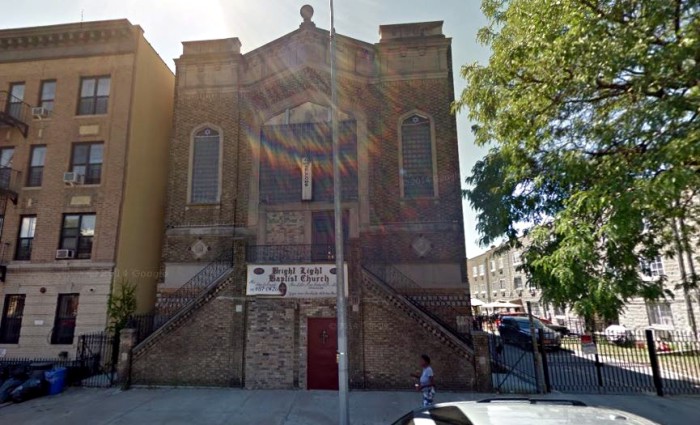

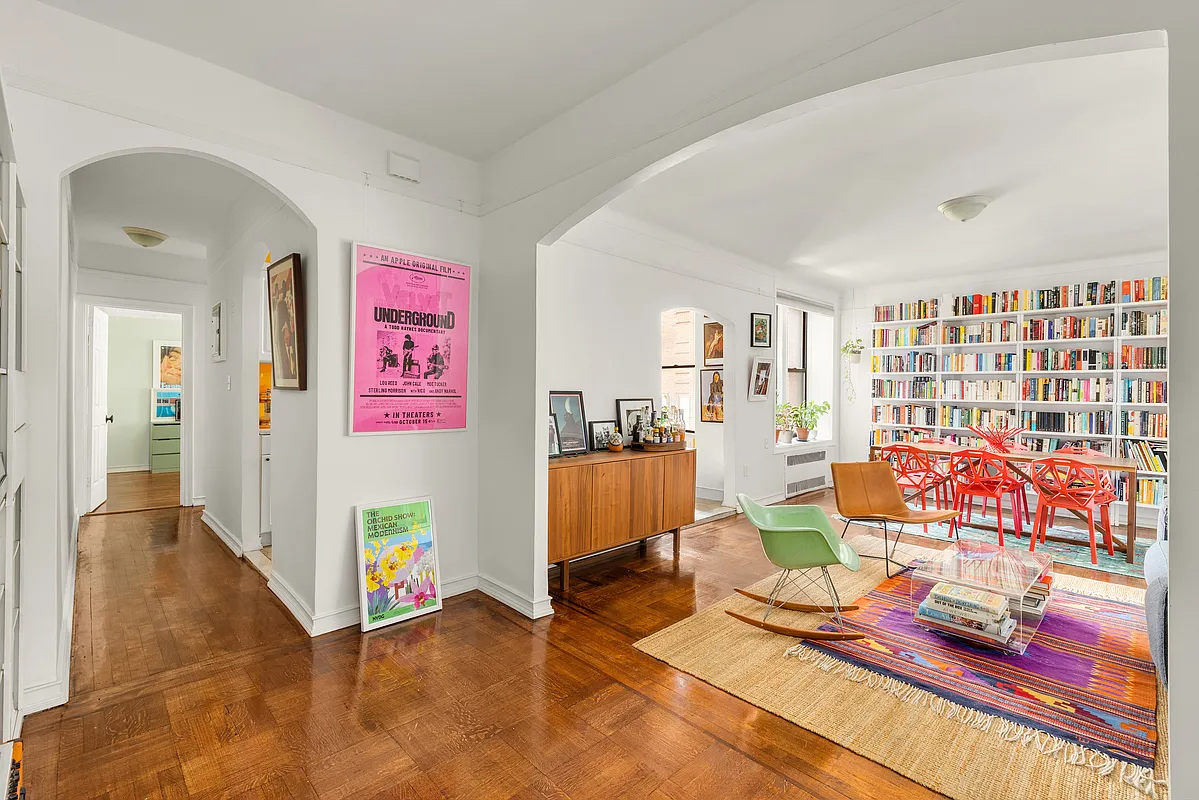
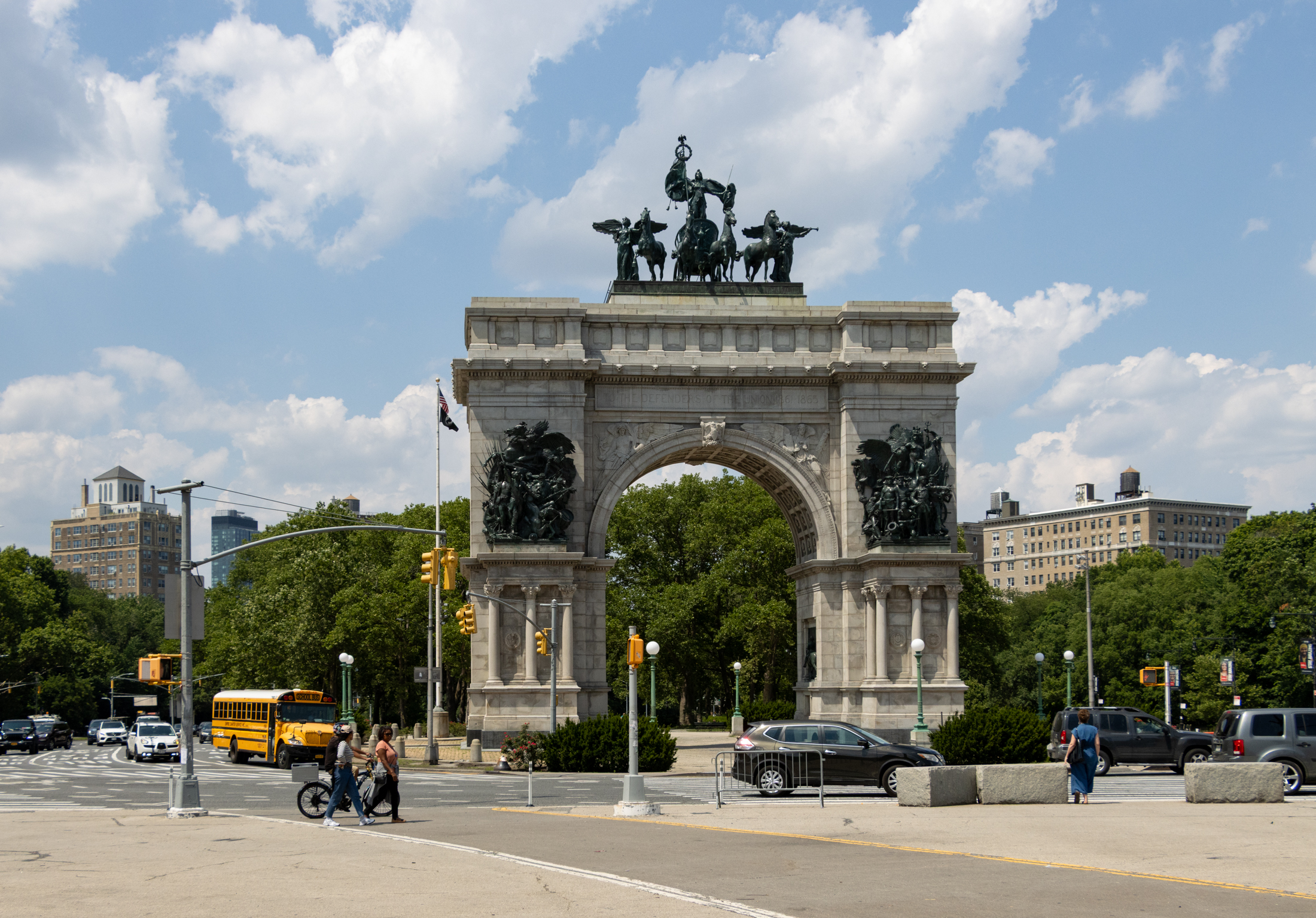
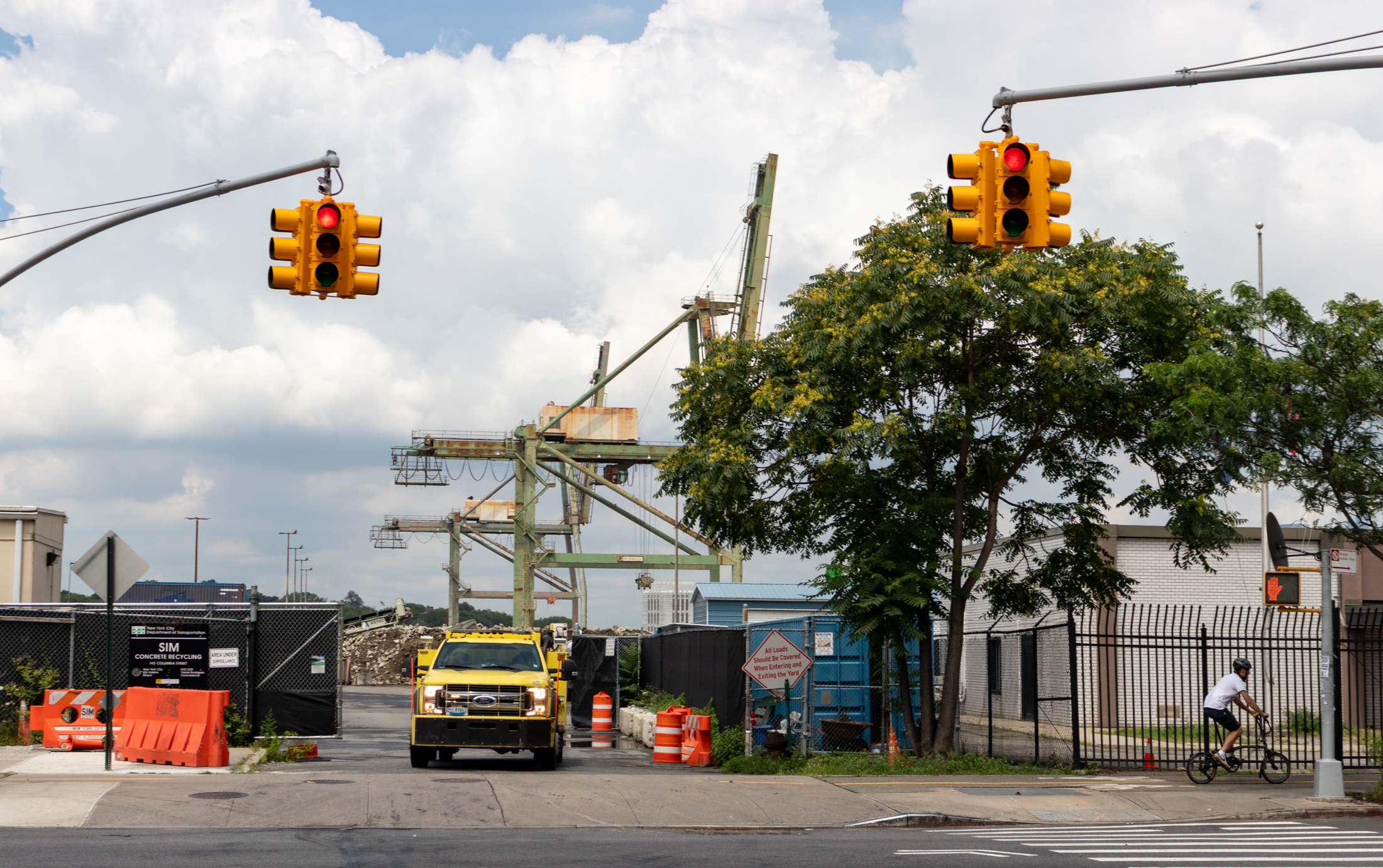
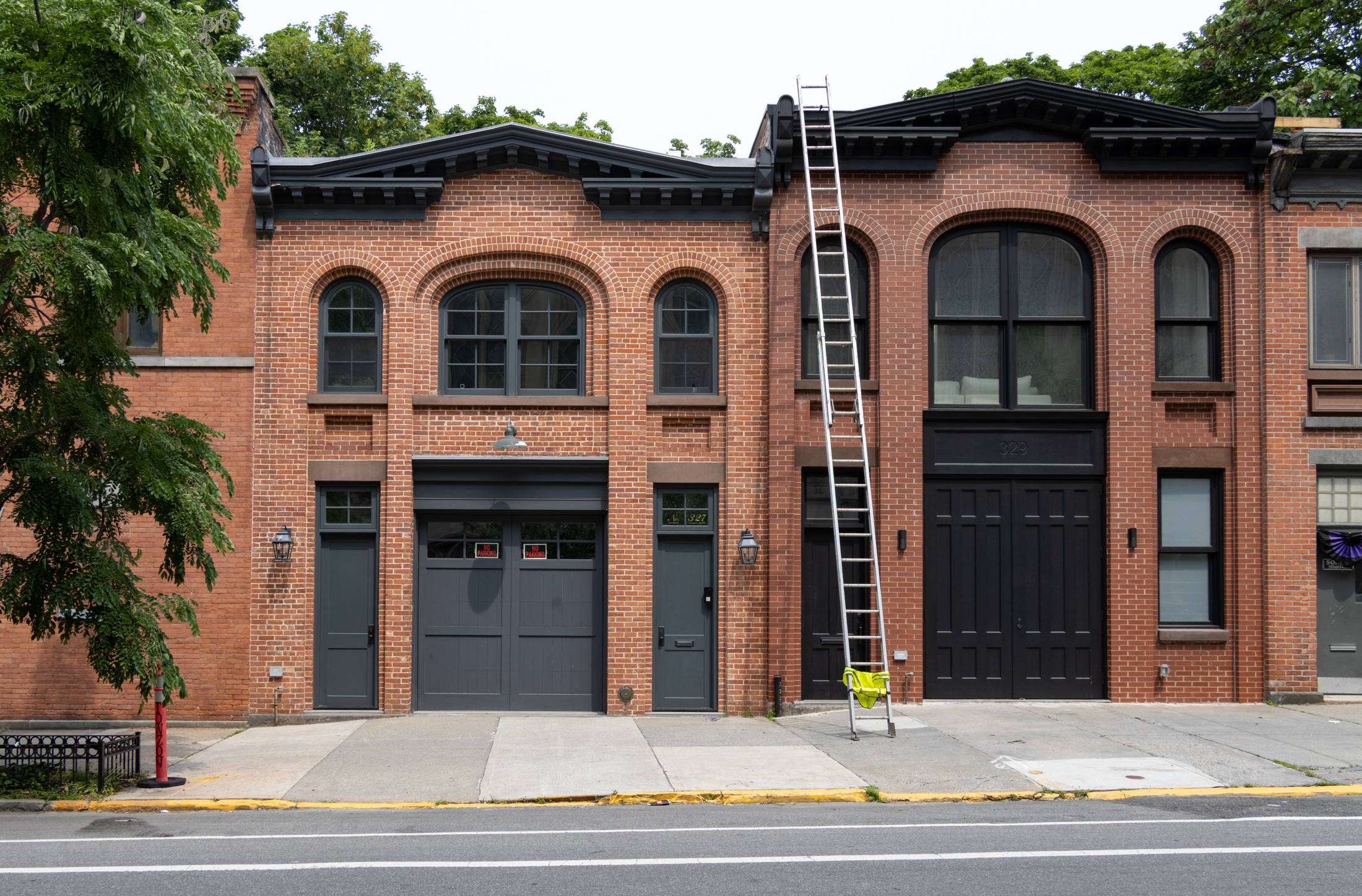
What's Your Take? Leave a Comment